Sports
Hydration Strategies for Sports Performance

Hydration Strategies for Sports Performance
Staying properly hydrated is a crucial component of any athlete’s performance. Whether you’re a professional or a weekend warrior, the right hydration strategy can make a significant difference in your endurance, strength, and overall health.
In this article, we will delve into the science of hydration, explore the best practices for different types of sports, and provide actionable tips to help you maintain optimal hydration levels.
The Science Behind Hydration and Performance
Why Hydration Matters
Hydration affects almost every aspect of athletic performance. Water regulates your body temperature, lubricates your joints, and helps transport nutrients to give you energy and keep you healthy. When you’re not properly hydrated, your body can’t perform at its highest level.
Key Functions of Hydration
- Temperature Regulation: Water helps your body maintain a stable temperature through sweating and respiration.
- Joint Lubrication: Adequate hydration keeps your joints flexible and reduces the risk of injury.
- Nutrient Transport: Water facilitates the movement of nutrients and oxygen to cells and the removal of waste products.
Dehydration and Its Effects
Dehydration occurs when you lose more fluids than you take in. Even mild dehydration can impair physical performance and cognitive function. Severe dehydration can lead to serious health issues such as heat exhaustion or heat stroke.
Signs of Dehydration
- Thirst
- Dry mouth
- Dark yellow urine
- Fatigue
- Dizziness
- Confusion
Hydration Strategies for Different Sports
Endurance Sports
Endurance athletes, such as marathon runners and long-distance cyclists, need to focus on maintaining hydration levels over extended periods.
Before the Event
- Pre-Hydration: Start hydrating several hours before the event. Aim for 16-20 ounces of water or a sports drink.
- Electrolytes: Consider consuming drinks with electrolytes to balance sodium and potassium levels.
During the Event
- Regular Intake: Drink small amounts of fluid regularly, aiming for about 4-6 ounces every 20 minutes.
- Electrolyte Replacement: Use sports drinks that contain electrolytes to replenish lost minerals.
After the Event
- Rehydration: Drink 16-24 ounces of fluid for every pound lost during the event.
- Recovery Drinks: Consider beverages that contain carbohydrates and protein to aid in recovery.
Team Sports
Team sports like soccer, basketball, and football require bursts of energy and stamina. Hydration strategies for these sports need to account for both high-intensity activity and rest periods.
Before the Game
- Hydrate Well: Drink at least 16-20 ounces of water two hours before the game.
- Light Snacks: Consume a light snack with carbohydrates and a small amount of protein.
During the Game
- Breaks and Halftime: Utilize breaks and halftime to rehydrate. Drink 8-10 ounces of water or sports drink.
- Listen to Your Body: Pay attention to signs of dehydration and drink accordingly.
After the Game
- Immediate Rehydration: Drink 16-24 ounces of fluid for every pound lost during the game.
- Balanced Meals: Eat a meal with a good balance of protein, carbohydrates, and fats to aid recovery.
Strength Training
Strength training athletes, such as weightlifters and bodybuilders, need to maintain hydration to support muscle function and recovery.
Pre-Workout
- Hydrate Early: Drink 16-20 ounces of water an hour before your workout.
- Electrolytes: Consider a sports drink with electrolytes if you anticipate a long session.
During Workout
- Frequent Sips: Take small sips of water between sets. Aim for 7-10 ounces every 20 minutes.
- Monitor Sweat Loss: Adjust your intake based on how much you sweat.
Post-Workout
- Replenish Fluids: Drink 16-24 ounces of water for every pound lost during the workout.
- Recovery Shake: Consider a recovery shake that includes water, protein, and carbohydrates.
Best Practices for Hydration
Understanding Your Sweat Rate
Knowing your sweat rate can help you tailor your hydration strategy. Weigh yourself before and after exercise to estimate how much fluid you lose through sweat.
How to Measure Sweat Rate
- Weigh yourself before exercise.
- Exercise for an hour.
- Weigh yourself after exercise.
- Subtract your post-exercise weight from your pre-exercise weight.
- Add any fluids you consumed during exercise to this number.
Choosing the Right Fluids
Not all fluids are created equal. Water is usually sufficient for most activities, but sports drinks can be beneficial for high-intensity or prolonged exercise.
Water vs. Sports Drinks
- Water: Ideal for low to moderate-intensity activities lasting less than an hour.
- Sports Drinks: Useful for high-intensity activities lasting more than an hour or in hot and humid conditions.
Hydration and Nutrition
Proper nutrition goes hand in hand with hydration. Foods with high water content, such as fruits and vegetables, can contribute to your overall hydration.
Hydrating Foods
- Fruits: Watermelon, strawberries, oranges
- Vegetables: Cucumbers, lettuce, celery
- Other: Soups, broths, smoothies
Timing Your Hydration
Timing your hydration can optimize your performance and recovery. Consistent fluid intake throughout the day is more effective than consuming large amounts at once.
Daily Hydration Tips
- Morning: Start your day with a glass of water.
- Meals: Drink a glass of water with each meal.
- Exercise: Follow pre, during, and post-exercise hydration strategies.
- Evening: Have a glass of water before bed.
Special Considerations
Hydration in Different Climates
Climate affects your hydration needs. Hot and humid conditions increase sweat loss, while cold environments can suppress the sensation of thirst.
Hot Climates
- Increase Fluid Intake: Drink more frequently to compensate for increased sweat loss.
- Electrolyte Balance: Use sports drinks to replace lost electrolytes.
Cold Climates
- Stay Conscious: Remember to drink even if you don’t feel thirsty.
- Warm Fluids: Consider warm beverages to encourage fluid intake.
Hydration for Young Athletes
Young athletes have different hydration needs due to their smaller body size and developing physiology.
Tips for Young Athletes
- Encourage Regular Drinking: Make sure they drink fluids before, during, and after activities.
- Flavorful Options: Offer flavored waters or sports drinks if they are reluctant to drink plain water.
Advanced Hydration Techniques
Hydration Tracking Tools
Technology can assist in monitoring and managing hydration. Wearable devices and apps can track fluid intake and remind you to drink.
Popular Tools
- Wearable Hydration Monitors: Track fluid loss through sweat and recommend fluid intake.
- Hydration Apps: Log daily water consumption and set reminders.
Personalized Hydration Plans
A personalized hydration plan considers your unique needs, including sweat rate, activity level, and climate.
Creating Your Plan
- Assess Sweat Rate: Measure your sweat rate as described earlier.
- Adjust for Activity: Increase fluid intake based on exercise intensity and duration.
- Consider Climate: Modify your plan for hot or cold environments.
Hydration Myths Debunked
There are many myths about hydration that can lead to confusion. It’s important to rely on science-based information.
Common Myths
- Myth: You only need to drink when you’re thirsty.
- Fact: Thirst is a late indicator of dehydration. Drink regularly.
- Myth: All fluids hydrate equally.
- Fact: Some fluids, like caffeinated drinks, can have a diuretic effect.
Conclusion
Proper hydration is vital for optimal sports performance and overall health. By understanding your body’s needs and implementing effective hydration strategies, you can enhance your athletic abilities and ensure long-term well-being. Remember to tailor your hydration plan to your specific activities, environment, and individual requirements.
FAQs on Hydration Strategies for Sports Performance
Why is hydration so crucial for athletes?
Hydration is essential for athletes because it helps maintain optimal body temperature, lubricates joints, transports nutrients, and ensures proper muscle function. Dehydration can lead to decreased performance, overheating, and even serious health issues.
How much water should an athlete drink before a game or workout?
Athletes should aim to drink about 500-600 ml (17-20 ounces) of water 2-3 hours before exercise and another 200-300 ml (7-10 ounces) about 20-30 minutes before the activity begins.
What are the signs of dehydration during exercise?
Common signs of dehydration include dry mouth, excessive thirst, headache, dizziness, fatigue, and dark-colored urine. Severe dehydration can lead to heat exhaustion or heat stroke.
Can drinking too much water be harmful for athletes?
Yes, drinking excessive amounts of water can lead to a condition called hyponatremia, where the body’s sodium levels become dangerously low. This can cause symptoms such as nausea, headache, confusion, and in severe cases, seizures or coma.
Are sports drinks better than water for hydration during intense workouts?
Sports drinks can be beneficial during prolonged, intense workouts because they contain electrolytes (like sodium and potassium) and carbohydrates, which help replenish lost nutrients and provide energy. However, for shorter, less intense workouts, water is usually sufficient for hydration.
Sports
The NHL Conn Smythe Trophy: Celebrating Playoff MVPs in Ice Hockey
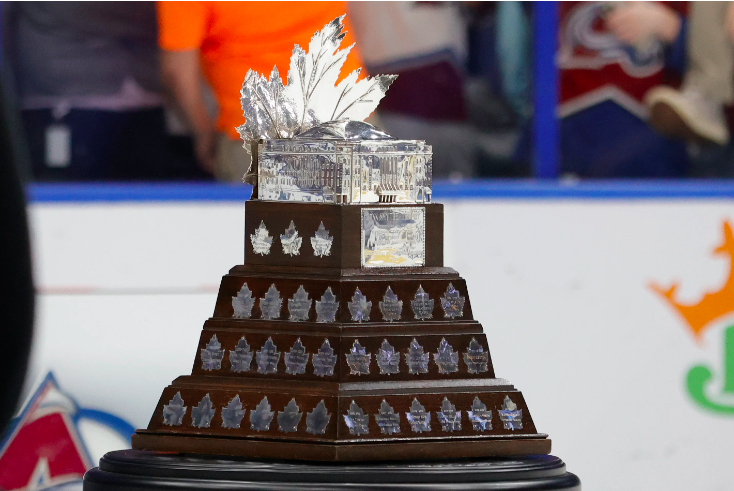
The NHL Conn Smythe Trophy: Celebrating Playoff MVPs in Ice Hockey
The NHL Conn Smythe Trophy is one of the most prestigious awards in ice hockey, given annually to the player judged to be the most valuable to their team during the NHL playoffs. Named after the former owner, general manager, and coach of the Toronto Maple Leafs, Conn Smythe, this award symbolizes excellence and clutch performance when it matters the most. Let’s dive into the rich history, notable winners, and the impact of the Conn Smythe Trophy on the sport of hockey.
The History and Origins of the Conn Smythe Trophy
Inception of the Trophy
The Conn Smythe Trophy was introduced in 1965, designed to honor the most valuable player (MVP) in the Stanley Cup playoffs. Unlike other awards that consider regular-season performance, the Conn Smythe focuses solely on playoff contributions.
Significance of Conn Smythe
Conn Smythe was a towering figure in the world of hockey. As the driving force behind the Toronto Maple Leafs, his legacy is remembered through this trophy. Smythe’s influence on the game, from his strategic innovations to his leadership, makes this award a fitting tribute to his contributions.
Criteria for Awarding the Conn Smythe Trophy
Playoff Performance
The primary criterion for the Conn Smythe Trophy is the player’s performance during the playoffs. This includes scoring, defensive play, leadership, and overall impact on the game.
Voting Process
Members of the Professional Hockey Writers’ Association (PHWA) vote to determine the winner of the Conn Smythe Trophy. Voting takes place immediately after the final game of the Stanley Cup Finals, ensuring that the entire playoff performance is considered.
Notable Conn Smythe Trophy Winners
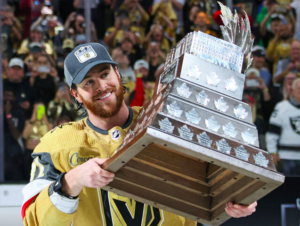
Bobby Orr: A Legend in Defense
Bobby Orr, the legendary defenseman, was the first player to win the Conn Smythe Trophy twice. His remarkable skill and leadership helped the Boston Bruins secure Stanley Cup victories in 1970 and 1972.
Patrick Roy: Master of the Crease
Patrick Roy stands out as the only player to win the Conn Smythe Trophy three times, each with a different team. His goaltending prowess and ability to perform under pressure make him a true icon in hockey history.
Sidney Crosby: Modern-Day Maestro
Sidney Crosby, with two Conn Smythe Trophies to his name, exemplifies the blend of skill, determination, and leadership that defines a playoff MVP. His contributions to the Pittsburgh Penguins’ success have solidified his place among the greats.
Impact of the Conn Smythe Trophy on Players’ Careers
Elevating Status and Legacy
Winning the Conn Smythe Trophy elevates a player’s status within the league and cements their legacy. It is a testament to their ability to perform when it matters most and often leads to greater recognition and endorsement opportunities.
Team Dynamics
The Conn Smythe Trophy highlights the importance of individual contributions to team success. Players who win this award are often seen as leaders and pivotal figures within their teams, influencing team dynamics and future strategies.
Memorable Moments in Conn Smythe Trophy History
Jean-Sébastien Giguère’s Heroics
In 2003, Jean-Sébastien Giguère became the fifth player to win the Conn Smythe Trophy despite his team, the Anaheim Ducks, losing in the Finals. His outstanding goaltending throughout the playoffs left an indelible mark on the hockey world.
Jonathan Toews’ Leadership
Jonathan Toews’ Conn Smythe win in 2010 showcased his leadership and clutch performances. His ability to elevate his game during critical moments was instrumental in the Chicago Blackhawks’ Stanley Cup victory.
Comparing the Conn Smythe Trophy with Other NHL Awards
Hart Memorial Trophy vs. Conn Smythe Trophy
While the Hart Memorial Trophy is awarded to the regular season’s most valuable player, the Conn Smythe Trophy focuses exclusively on playoff performance. This distinction highlights the unique value of excelling under playoff pressure.
Ted Lindsay Award vs. Conn Smythe Trophy
The Ted Lindsay Award, voted on by the players, recognizes the most outstanding player in the regular season. In contrast, the Conn Smythe Trophy is determined by the media and focuses on the playoffs, offering different perspectives on player excellence.
The Legacy and Future of the Conn Smythe Trophy
Evolving Game Dynamics
As the NHL evolves, so do the attributes valued in Conn Smythe winners. The increasing speed and skill in the game mean that future winners will likely showcase a diverse range of talents, from scoring to defensive acumen.
Rising Stars
Emerging talents like Connor McDavid and Nathan MacKinnon are poised to leave their mark on the playoffs. Their potential to win the Conn Smythe Trophy reflects the ongoing evolution of hockey and the rise of new superstars.
Conclusion
The NHL Conn Smythe Trophy is more than just an award; it is a symbol of playoff excellence and a testament to the players who rise to the occasion when it matters most. From its inception to its notable winners, the Conn Smythe Trophy captures the essence of what it means to be the most valuable player in the most crucial moments of the game. As we look to the future, this prestigious award will continue to celebrate the best in hockey, honoring those who make the greatest impact in the playoffs.
Frequently Asked Questions (FAQs)
Who was the first winner of the Conn Smythe Trophy?
The first winner of the Conn Smythe Trophy was Jean Béliveau of the Montreal Canadiens in 1965.
How many times has Patrick Roy won the Conn Smythe Trophy?
Patrick Roy has won the Conn Smythe Trophy three times, the most by any player, in 1986, 1993, and 2001.
Can a player from the losing team win the Conn Smythe Trophy?
Yes, players from the losing team can win the Conn Smythe Trophy. Notable examples include Jean-Sébastien Giguère in 2003 and Roger Crozier in 1966.
How is the winner of the Conn Smythe Trophy chosen?
The winner of the Conn Smythe Trophy is chosen by a vote from the Professional Hockey Writers’ Association members after the conclusion of the Stanley Cup Finals.
Has a rookie ever won the Conn Smythe Trophy?
Yes, Patrick Roy won the Conn Smythe Trophy as a rookie in 1986, leading the Montreal Canadiens to a Stanley Cup victory with his stellar goaltending.
Sports
The NHL Hart Memorial Trophy: A Deep Dive into Hockey’s Most Prestigious Award
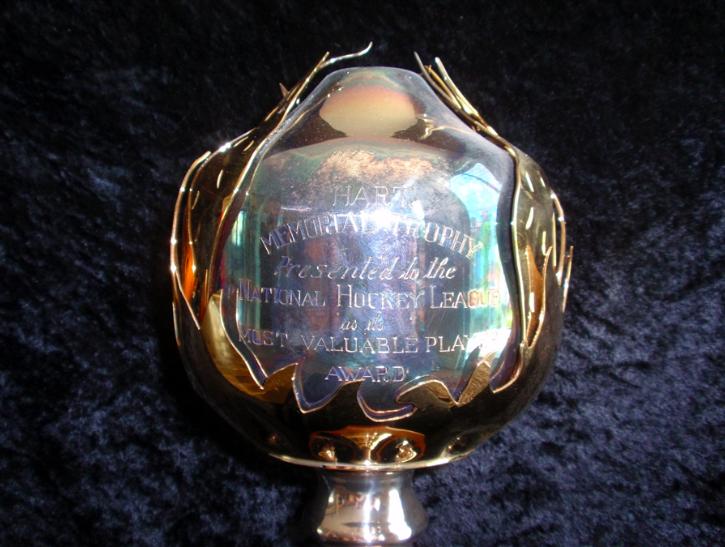
The NHL Hart Memorial Trophy: A Deep Dive into Hockey’s Most Prestigious Award
The NHL Hart Memorial Trophy stands as a testament to excellence in ice hockey, awarded annually to the player judged to be the most valuable to his team. This accolade, named after Dr. David Hart, has a storied history and significant impact on the sport. Let’s explore the origins, criteria, notable winners, and the profound legacy of the Hart Trophy.
The Origins of the Hart Memorial Trophy
Early Beginnings
The Hart Memorial Trophy was first awarded in 1924. Dr. David Hart, the father of Montreal Canadiens coach Cecil Hart, donated the original trophy. It was created to honor the player deemed most valuable to their team, a concept that has become integral to the NHL’s recognition of individual excellence.
Evolution Over the Decades
Initially, the award was based on votes from the NHL coaches. Over time, the voting process evolved to include members of the Professional Hockey Writers’ Association (PHWA), ensuring a broader and more diverse perspective in determining the winner.
Criteria for Winning the Hart Memorial Trophy
Judging Value
The Hart Trophy is unique because it focuses on a player’s value to their team rather than simply their statistical performance. This means the winner often comes from a team that has significantly benefited from their contributions, even if that team doesn’t necessarily top the standings.
Voting Process
The PHWA members cast their votes at the end of the regular season. Each voter selects their top five candidates, and points are awarded based on these rankings. The player with the highest total points is awarded the trophy.
Notable Hart Trophy Winners
Wayne Gretzky: The Great One
Wayne Gretzky’s name is synonymous with the Hart Trophy, having won it a record nine times during his illustrious career. His dominance in the 1980s with the Edmonton Oilers is a benchmark of individual excellence in the NHL.
Gordie Howe: Mr. Hockey
Gordie Howe, with six Hart Trophies to his name, exemplified longevity and consistency. His ability to perform at a high level across multiple decades made him a legend in the sport.
Recent Winners
Recent winners such as Connor McDavid and Leon Draisaitl have brought new excitement to the NHL, showcasing the blend of speed, skill, and strategic thinking that defines modern hockey.
Impact of the Hart Trophy on Careers
Boost in Recognition
Winning the Hart Trophy often elevates a player’s status in the league, leading to increased endorsement opportunities and a lasting legacy. It’s a recognition that cements a player’s place among the all-time greats.
Team Influence
The trophy also highlights the importance of individual contributions to a team’s success. Players who win the Hart are seen as pivotal to their team’s performance, often leading to leadership roles and increased responsibilities.
Controversies and Debates
Subjectivity of Value
Given the subjective nature of “value,” debates often arise about whether the right player was chosen. Factors like team success, statistical dominance, and overall influence can lead to differing opinions among fans and analysts.
Close Contests
There have been numerous instances where the voting was exceptionally close, leading to heated discussions about the merits of each candidate. These debates underscore the passion and engagement of the hockey community.
The Legacy of the Hart Memorial Trophy
Influence on the Game
The Hart Trophy has a profound impact on how players approach the game, knowing that their individual efforts could be recognized with such a prestigious award. It fosters a competitive spirit and drives players to excel.
Historical Significance
As the NHL continues to grow, the Hart Trophy remains a symbol of excellence and achievement. It connects the current generation of players with the legends of the past, preserving the rich history of the sport.
Memorable Hart Trophy Moments
Ovechkin’s Triple Crown
Alex Ovechkin’s third Hart Trophy in 2013 highlighted his scoring prowess and leadership, solidifying his place as one of the greatest goal scorers in NHL history.
Carey Price’s Historic Win
In 2015, Carey Price became the first goaltender to win the Hart Trophy in over a decade, showcasing the significant impact a stellar goaltending season can have on a team’s success.
Comparing the Hart Trophy with Other NHL Awards
The Art Ross Trophy
While the Art Ross Trophy is awarded to the league’s top scorer, the Hart Trophy takes a broader view, considering overall contributions and value. This distinction makes the Hart Trophy unique and highly coveted.
The Ted Lindsay Award
The Ted Lindsay Award, voted by the players, is often seen as a companion to the Hart Trophy. It provides a player’s perspective on who the most outstanding player is, offering another layer of recognition.
The Future of the Hart Memorial Trophy
Emerging Stars
As the NHL continues to evolve, new stars like Auston Matthews and Jack Hughes are emerging as potential Hart Trophy candidates. Their impact on the game ensures the future of the Hart Trophy remains bright.
Changing Dynamics
With the game becoming faster and more skilled, the criteria for winning the Hart Trophy may continue to adapt. Players who excel in multiple facets of the game will likely be at the forefront of future considerations.
Conclusion
The NHL Hart Memorial Trophy represents the pinnacle of individual achievement in hockey. Its rich history, the legends who have won it, and its impact on the game make it a cornerstone of NHL culture. As we look to the future, the Hart Trophy will undoubtedly continue to honor those who exemplify the best in hockey, celebrating the players who make the greatest impact on their teams and the sport.
Frequently Asked Questions (FAQs)
How many times has Wayne Gretzky won the Hart Trophy?
Wayne Gretzky has won the Hart Trophy a record nine times, showcasing his dominance in the NHL during his career.
Who was the first player to win the Hart Memorial Trophy?
The first recipient of the Hart Memorial Trophy was Frank Nighbor of the Ottawa Senators in 1924.
How is the Hart Trophy winner determined?
The Hart Trophy winner is determined by votes from members of the Professional Hockey Writers’ Association, who rank their top five candidates at the end of the regular season.
Has a goaltender ever won the Hart Trophy?
Yes, several goaltenders have won the Hart Trophy, including Carey Price in 2015 and Dominik Hasek, who won it twice in the 1990s.
What distinguishes the Hart Trophy from the Ted Lindsay Award?
While the Hart Trophy is awarded based on votes from sportswriters, the Ted Lindsay Award is voted on by the players themselves, recognizing the most outstanding player in the NHL from their perspective.
Sports
Ice Hockey: A Comprehensive Guide to the Fastest Game on Ice

Ice Hockey: A Comprehensive Guide to the Fastest Game on Ice
Ice hockey, a thrilling and dynamic sport, captures the hearts of millions worldwide. Known for its speed, skill, and intensity, this game is played on ice and requires players to navigate a puck into the opponent’s goal using sticks. Let’s delve deep into the world of ice hockey, exploring its history, rules, equipment, strategies, and the key elements that make it one of the most exciting sports.
The History of Ice Hockey
Origins and Early Development
Ice hockey’s roots trace back to various stick-and-ball games played in Europe centuries ago. However, it was in Canada during the 19th century that the modern version of the game began to take shape. The first organized indoor hockey game took place in Montreal on March 3, 1875, a landmark event that set the stage for the sport’s evolution.
The Birth of Professional Ice Hockey
Professional ice hockey emerged in the early 20th century with the formation of leagues such as the National Hockey Association (NHA) and later, the National Hockey League (NHL) in 1917. The NHL has since become the premier professional ice hockey league globally, featuring teams from both the United States and Canada.
The Fundamentals of Ice Hockey
The Playing Surface
Ice hockey is played on a rectangular rink with rounded corners. The rink measures 200 feet by 85 feet in the NHL, with slightly larger dimensions in international play. The surface is divided into three zones: the defensive zone, the neutral zone, and the offensive zone.
Basic Rules and Objectives
The primary objective of ice hockey is to score more goals than the opposing team. Each team has six players on the ice, including a goaltender. The game consists of three 20-minute periods, with intermissions in between.
Key rules include:
- Offside: Players must not enter the offensive zone ahead of the puck.
- Icing: Shooting the puck from behind the center line past the opponent’s goal line without it being touched.
- Penalties: Infractions such as tripping, hooking, and slashing result in time in the penalty box.
Essential Equipment
Skates and Sticks
Players wear specialized ice hockey skates designed for agility and speed. Sticks are made of composite materials or wood, featuring a curved blade for better puck control.
Protective Gear
Safety is paramount in ice hockey. Players don helmets, shoulder pads, elbow pads, gloves, shin guards, and mouthguards. Goaltenders wear additional protective gear, including leg pads, chest protectors, and masks.
The Puck
The puck is a hard rubber disc, measuring three inches in diameter and one inch thick. It is frozen before games to reduce bouncing on the ice.
Game Strategies and Tactics
Offensive Strategies
Effective offensive play in ice hockey involves various strategies to outmaneuver the defense and create scoring opportunities. Common tactics include:
- Forechecking: Pressuring the opponent in their defensive zone to regain possession.
- Cycling: Moving the puck along the boards in the offensive zone to tire out defenders.
- Power Play: Capitalizing on a numerical advantage when the opposing team has a player in the penalty box.
Defensive Strategies
Defensive play aims to prevent the opposing team from scoring. Key strategies include:
- Backchecking: Forwards helping defend by skating back to their zone.
- Penalty Killing: Successfully defending while a player is in the penalty box.
- Shot Blocking: Defenders sacrificing their bodies to block shots on goal.
The Role of the Goaltender
Goaltending Techniques
Goaltenders, or goalies, play a crucial role in ice hockey. Their primary responsibility is to stop the puck from entering the net. Techniques include:
- Butterfly Style: Dropping to the knees to cover the lower part of the net.
- Stand-up Style: Remaining upright to block high shots.
- Hybrid Style: Combining elements of both butterfly and stand-up styles.
Famous Goaltenders
Legendary goaltenders such as Patrick Roy, Martin Brodeur, and Dominik Hasek have left an indelible mark on the game, showcasing extraordinary skill and athleticism.
The Culture of Ice Hockey
Fan Engagement and Traditions
Ice hockey boasts a passionate fan base, with traditions such as the playoff beard and the throwing of hats for hat-trick performances. Fans are known for their unwavering support and enthusiasm.
International Competitions
Ice hockey is a global sport, with prestigious tournaments such as the Winter Olympics, the IIHF World Championship, and the World Junior Championship highlighting international talent.
Ice Hockey Leagues and Teams
The NHL
The NHL, with 32 teams, is the pinnacle of professional ice hockey. Teams like the Montreal Canadiens, Toronto Maple Leafs, and Chicago Blackhawks have rich histories and loyal fan bases.
Other Prominent Leagues
Other notable leagues include the Kontinental Hockey League (KHL) in Russia, the Swedish Hockey League (SHL), and the American Hockey League (AHL), which serves as a development league for the NHL.
The Impact of Ice Hockey on Society
Youth Development and Community Programs
Ice hockey fosters youth development through programs like USA Hockey and Hockey Canada. These initiatives promote skills, teamwork, and sportsmanship.
Philanthropy and Social Initiatives
Many players and organizations are involved in charitable efforts, using their platform to give back to communities and support various causes.
The Future of Ice Hockey
Technological Advancements
Technological innovations, such as advanced analytics and improved equipment, are enhancing the game. The use of video review and tracking systems provides deeper insights into player performance.
Growing Global Popularity
Ice hockey’s popularity continues to grow worldwide, with increasing participation in non-traditional markets like Asia and Australia. Efforts to make the sport more inclusive and accessible are expanding its reach.
Conclusion
Ice hockey, with its rich history and dynamic gameplay, captivates fans across the globe. From the origins of the sport in Canada to its current status as a worldwide phenomenon, the game has evolved significantly. The strategies, skills, and passion involved make ice hockey one of the most exhilarating sports. Whether you’re a seasoned fan or new to the game, there’s always something exciting to discover in the world of ice hockey.
Frequently Asked Questions (FAQs)
What is the significance of the Stanley Cup in ice hockey?
The Stanley Cup is the oldest professional sports trophy in North America, awarded annually to the NHL champion. Winning the Stanley Cup is the pinnacle of success in ice hockey.
How does the NHL draft work?
The NHL draft allows teams to select eligible players from amateur or junior leagues. The draft order is determined by the previous season’s standings, with the worst-performing teams picking first.
What is a hat trick in ice hockey?
A hat trick occurs when a player scores three goals in a single game. Fans traditionally celebrate by throwing hats onto the ice.
Who holds the record for the most goals in an NHL season?
Wayne Gretzky holds the record for the most goals in an NHL season, with 92 goals scored during the 1981-82 season.
How do power plays and penalty kills impact a game?
Power plays give a team a numerical advantage due to an opponent’s penalty, increasing scoring chances. Penalty kills involve successfully defending while down a player, demonstrating strong defensive skills.
-

 NBA4 months ago
NBA4 months agoLaMelo Ball Net Worth: A Comprehensive Look at the NBA Star’s Financial Empire
-
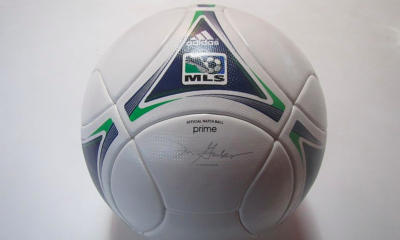
 Football6 months ago
Football6 months agoMeet the World Football Celebrities and Their Stories
-

 Football5 months ago
Football5 months agoEuro 2024: Alvaro Morata Speaks Out About ‘No Respect’ in Spain
-

 Game5 months ago
Game5 months agoThe Ultimate Guide to General Multi-Sport Events
-
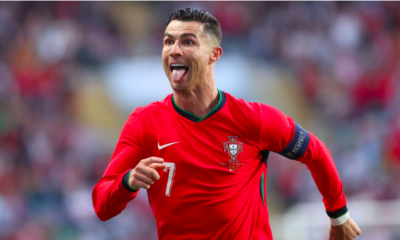
 Football5 months ago
Football5 months agoRonaldo’s Business Ventures and Investments (CR7 Brand)
-

 Football5 months ago
Football5 months agoEuro 2024 Power Rankings: Spain Remains Dominant Ahead of Semifinals
-

 Wrestling2 months ago
Wrestling2 months agoJey Uso Biography and Net Worth: The Rise of a WWE Superstar
-
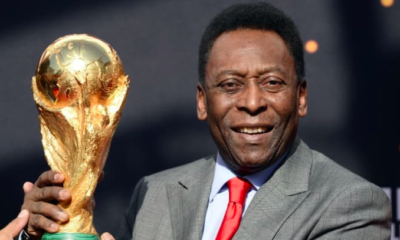
 Sports6 months ago
Sports6 months agoPele: The Legendary Journey of Football’s Greatest Icon | The Immortal King of Football




